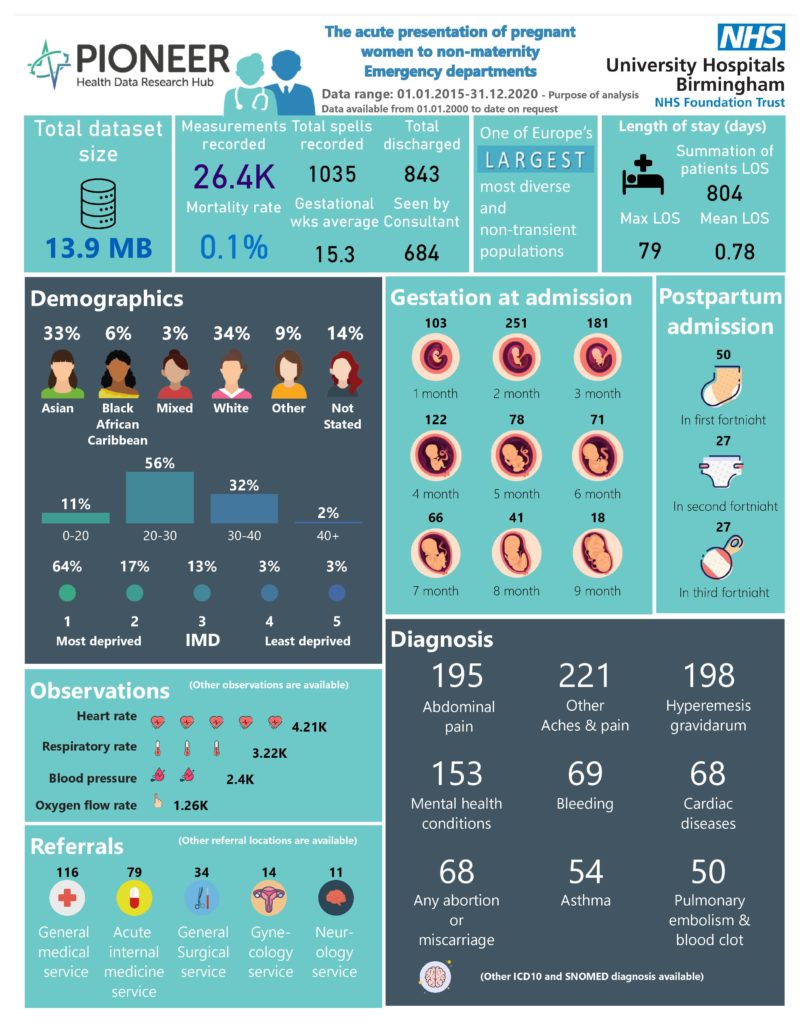PIONEER geography
The West Midlands has a population of 5.9million and includes a diverse ethnic, socio-economic mix. There is a higher than average percentage of minority ethnic groups. The region has the youngest population in the UK with a higher than average birth rate. There are particularly high rates of physical inactivity, obesity, smoking and diabetes. 51.2% of babies born in Birmingham have at least one parent born outside of the UK, compared with 34.7% for England. Each day more than 100,000 people are treated in hospital, see their GP or are cared for by the NHS. EHR
University Hospitals Birmingham NHS Foundation Trust (UHB) is one of the largest NHS Trusts in England, providing direct acute services & specialist care across four hospital sites, with 2.2 million patient episodes per year, 2750 beds and 100 ITU beds. UHB runs a fully electronic healthcare record (EHR) (PICS; Birmingham Systems), a shared primary & secondary care record (Your Care Connected) and a patient portal, ‘My Health’.Scope
Pregnant or post-partum women from 2015 onwards who attended A&E at the Queen Elizabeth Hospital Birmingham. Longitudinal and individually linked, so that the preceding and subsequent health journey can be mapped and healthcare utilisation prior to and after admission understood. The dataset includes highly granular patient demographics (including gestation and postpartum period), co-morbidities taken from ICD-10 & SNOMED-CT codes. Serial, structured data pertaining to process of care (admissions, wards, practitioner changes and discharge outcomes), presenting complaints, physiology readings (temperature, blood pressure, NEWS2, SEWS, AVPU), referrals, all prescribed and administered treatments and all outcomes. Available supplementary data
More extensive data including granular serial physiology, bloods, conditions, interventions, treatments. Ambulance, 111, 999 data, synthetic data. Available supplementary support
Analytics, and model build, validation & refinement; AI; data partner support for ETL (extract, transform and load) process; clinical expertise; patient and end-user access; purchaser access; regulatory requirements; data-driven trials; ‘fast screen’ services.




